How to hold a violin bow
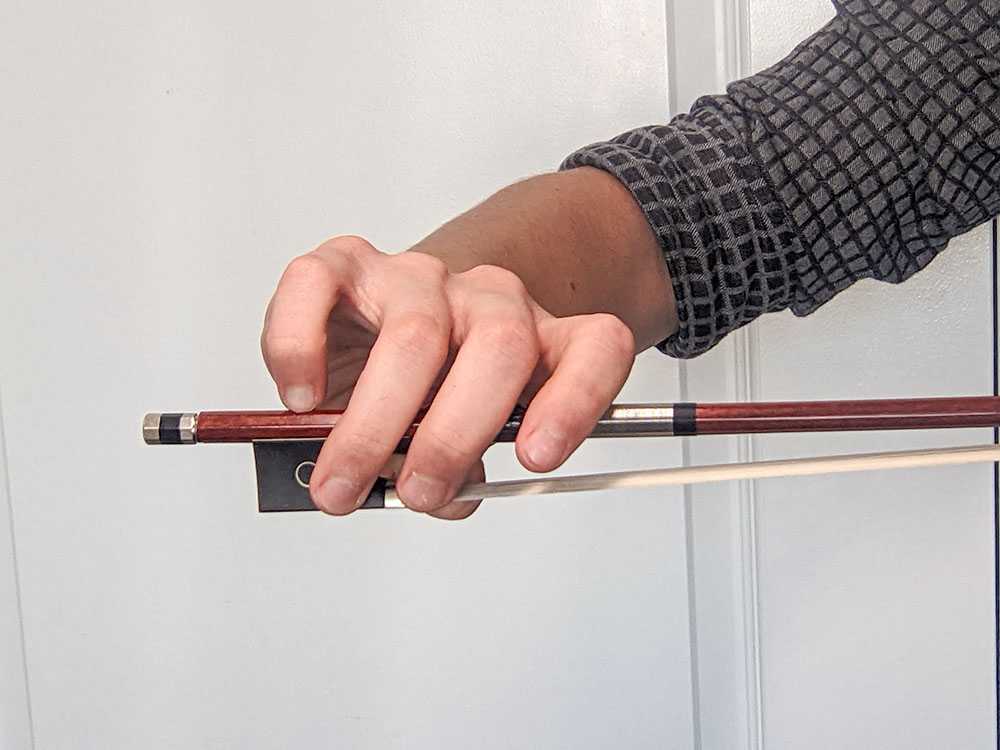
As a beginner violinist, you may have some challenges with how to properly hold a violin bow. But if you follow this step by step guide to mastering your bow hold, you will be able to hold a violin bow with ease. With some self-discipline and patience, you’ll masterfully learn how to hold the violin bow correctly. Many of our students do this easily in their violin lessons, follow the steps, and you can, too.
How to properly hold a violin bow. There is no “one way”.
There are many ways to properly hold a bow, but it effectively boils down to two main schools of thought: the Russian Bow Hold, and the Franco-Belgian Bow Hold. You can be successful with either hold, so there is no one proper way to do it.
The Franco-Belgian violin bow hold
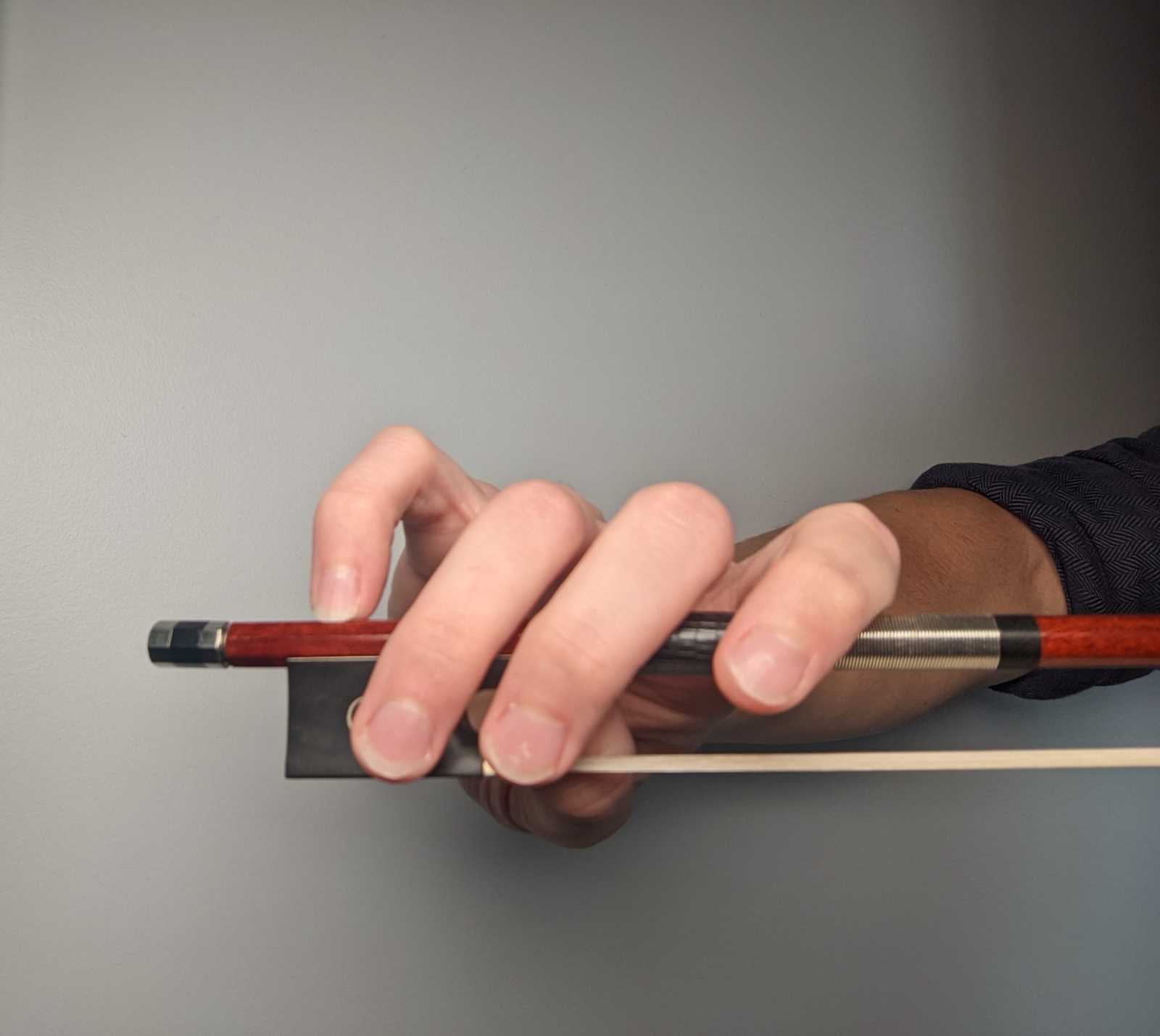
The Franco-Belgian bow hold is a more popular choice in modern violin performance. It was taught by masters of violin teaching such as Ivan Galamian or Shinichi Suzuki.
Violinists such as Joshua Bell, and Itzhak Perlman use this bow hold, which relies on a flexible thumb, active pinky, and an overall square frame.
The Russian violin bow hold
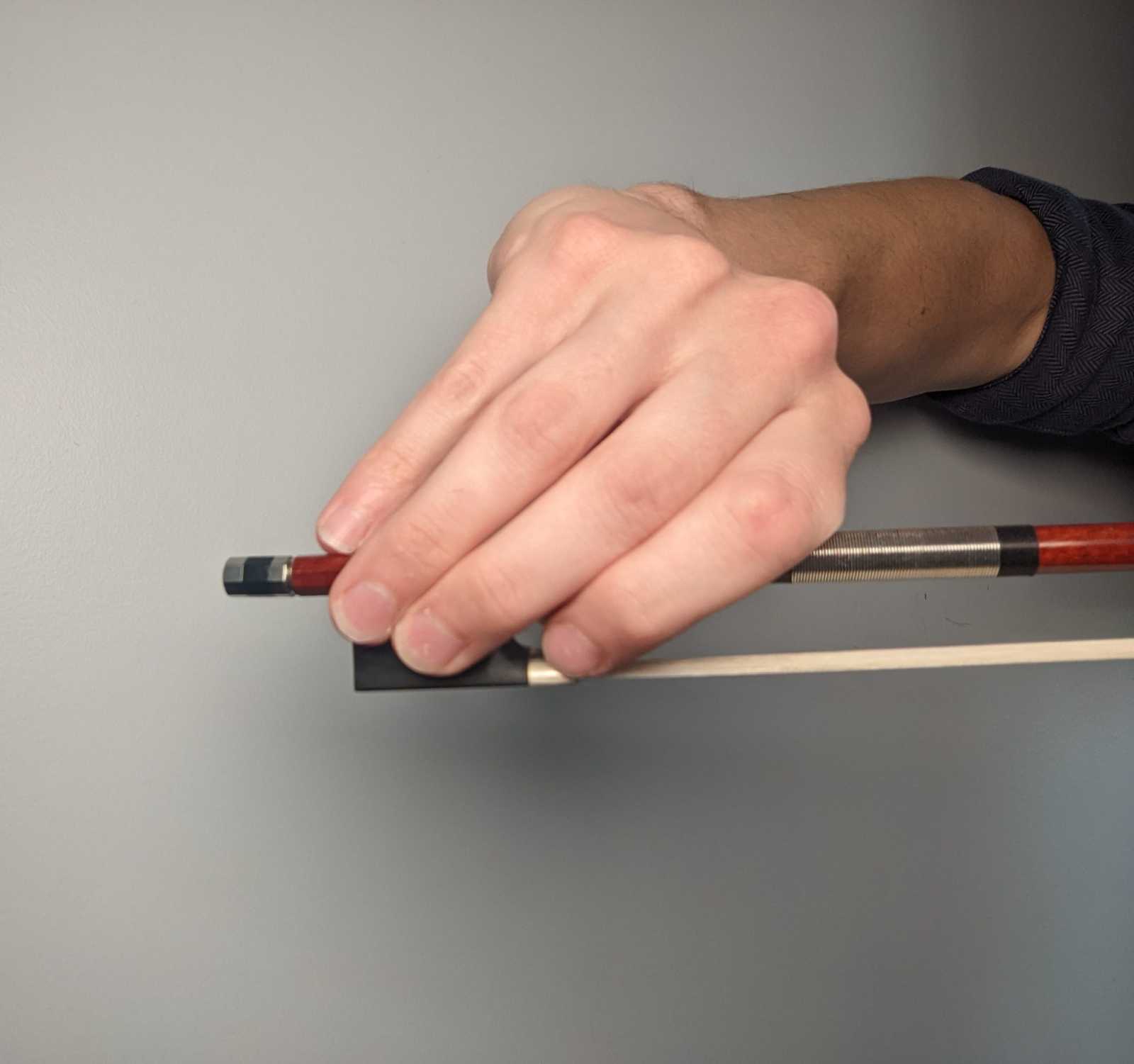
The Russian Bow hold is not often seen in 21st century violinists. The hand is very pronated towards the index finger, with the pinky being straight. Jascha Heifetz and Nathan Milstein, two of the greatest violinists in history, used a Russian Bow Hold.
We’ll stick with the former in this guide – the Franco-Belgian bow hold – as it works well for all styles of music.
In order to help you work up to a proper bow hold, it's best to do two beginner bow holds first: a pencil bow hold, and then a balance-point bow hold.
If you are a beginner, start here with the pencil bow hold, and then progress to the balance point bow hold.
Moving through the stages will help you have a better violin hold in the future, and learn it well. My students who are taking violin lessons always have a better violin bow hold when they progress through all three holds.
They will help you understand the bow hold before your muscles strengthen enough to hold the bow properly and without fatigue.
Once you've completed those first two, come back here for the franco-belgian violin bow hold.
How to hold the violin bow
Now that you've done the preparatory holds, let's hold the violin bow like a pro.
1. Set the thumb at the frog
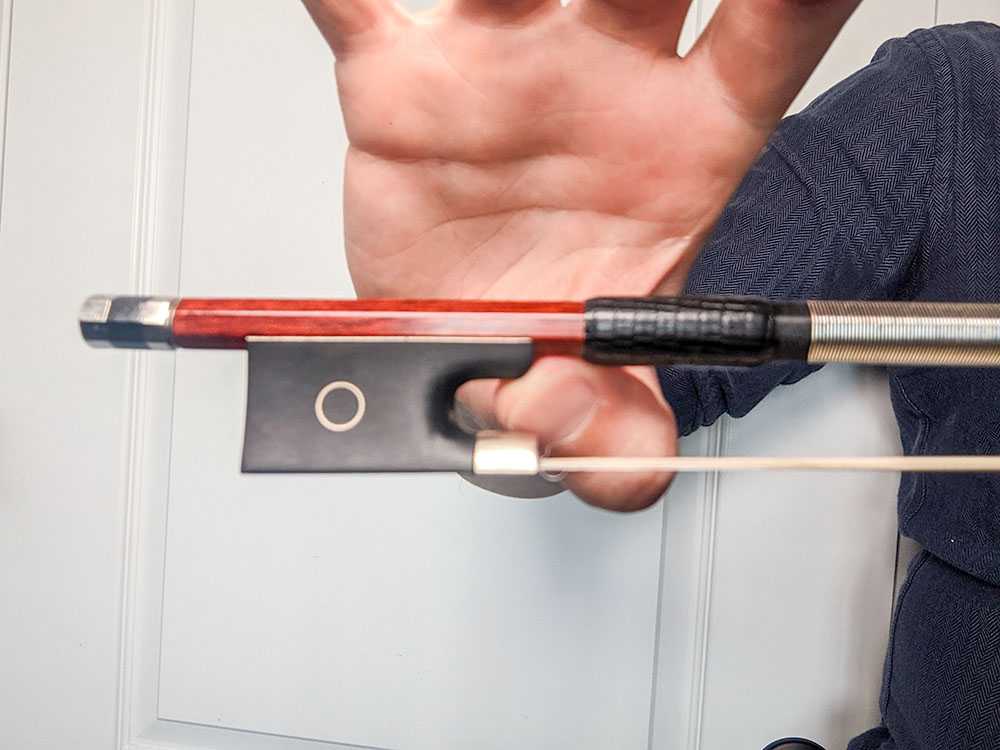
Set your right hand by the frog so that your thumb is at the point where the U-shape of the frog and the stick meet.
2. Place middle and ring fingers over the stick
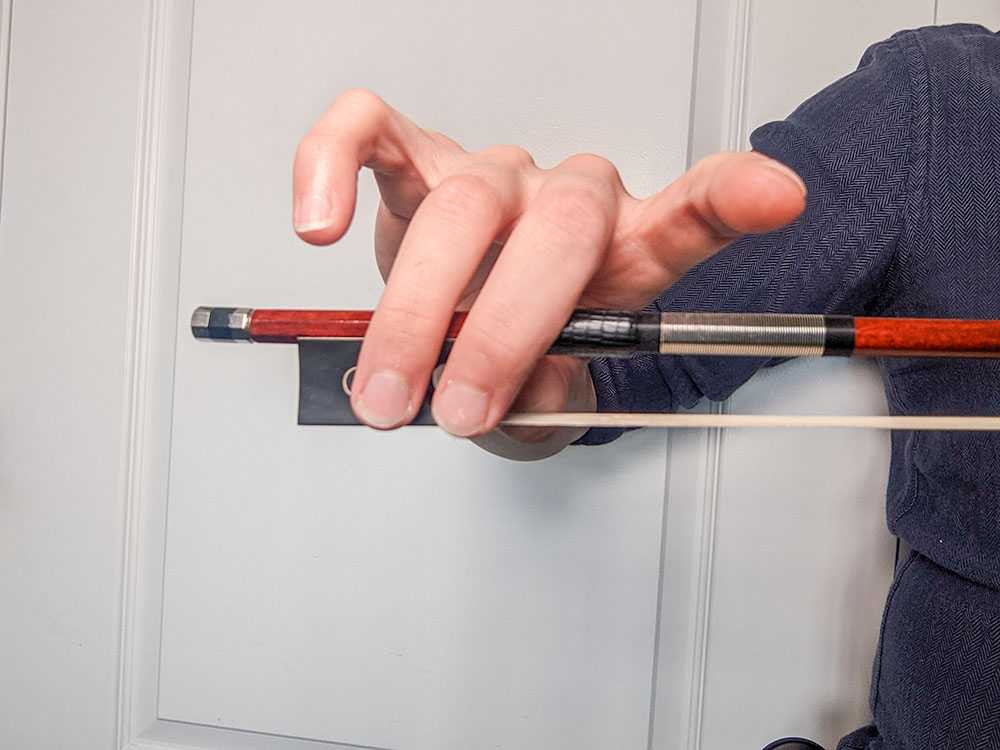
Drape your middle and ring finger over the stick and onto the frog. Depending on the size of your hand, the ring finger may be the only finger physically on the frog.
3. Place your index finger
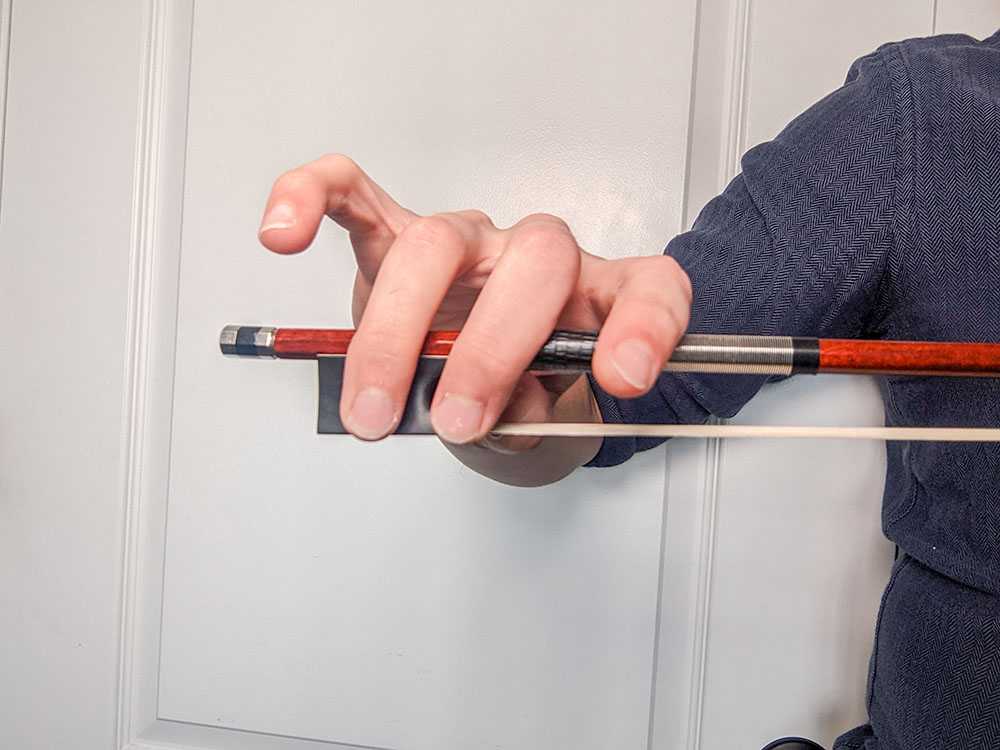
Your index finger rests on top of the stick between the middle and top joint. There’s often a cushion called the “pad” that your index finger can rest on.
4. Place the pinky
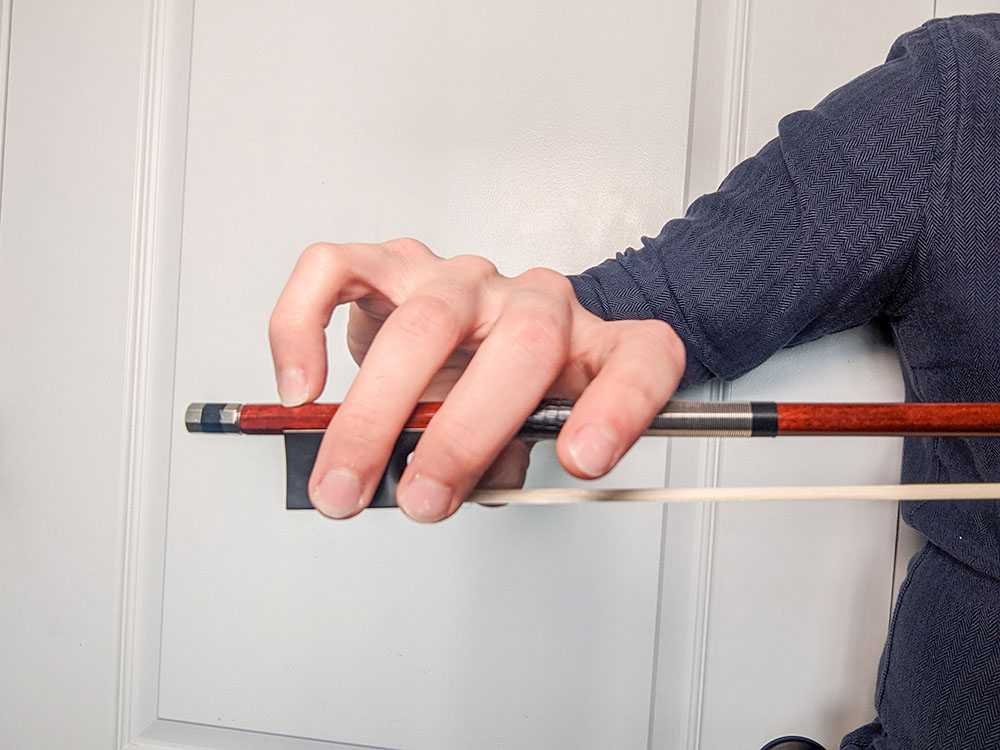
Curl your pinky so the fingertip is sitting on top of thes stick.
Awesome work! You’re now holding the violin bow like a pro.
Check out the following images for some more images of how to hold the violin bow correctly. You’ll also see some images of the most common errors beginners make with the bow so that you can avoid them.

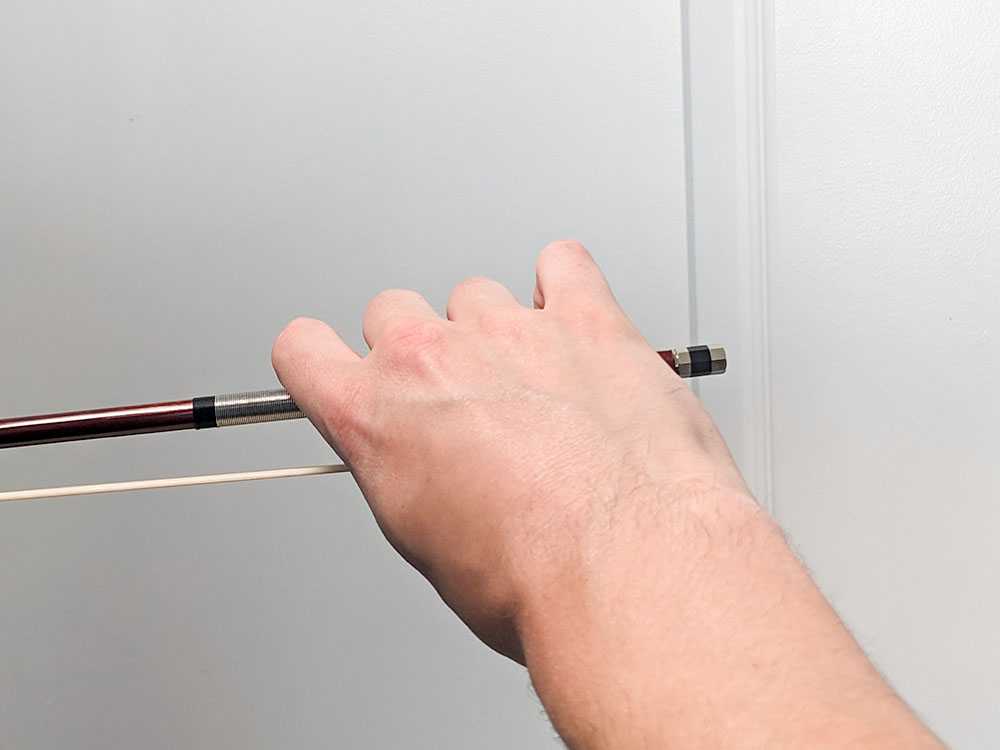
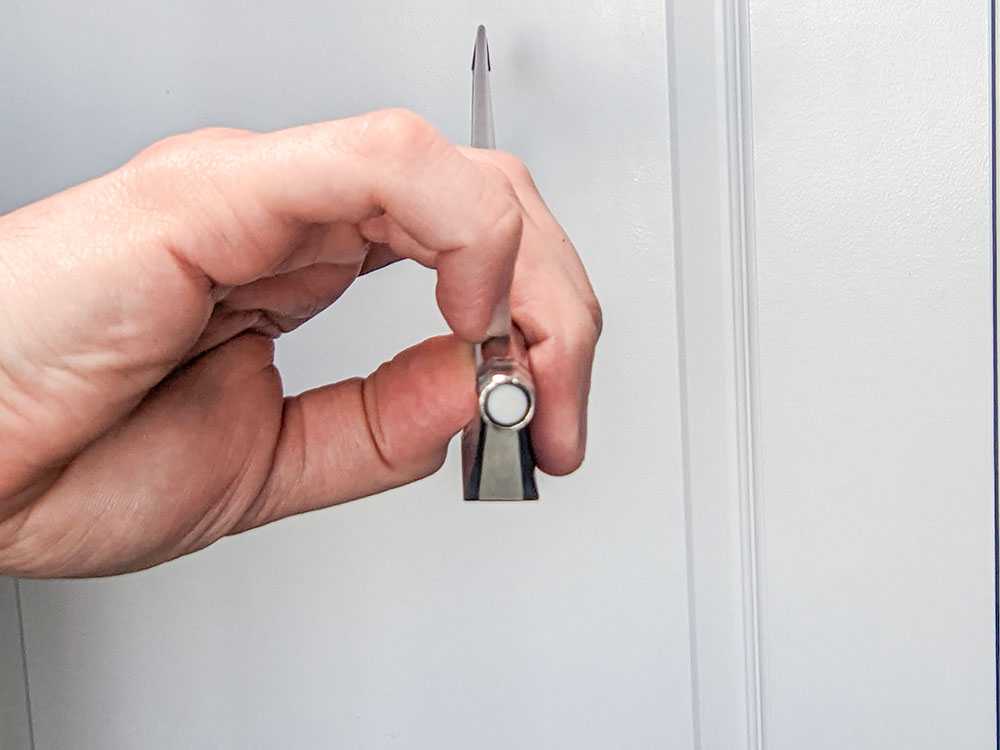
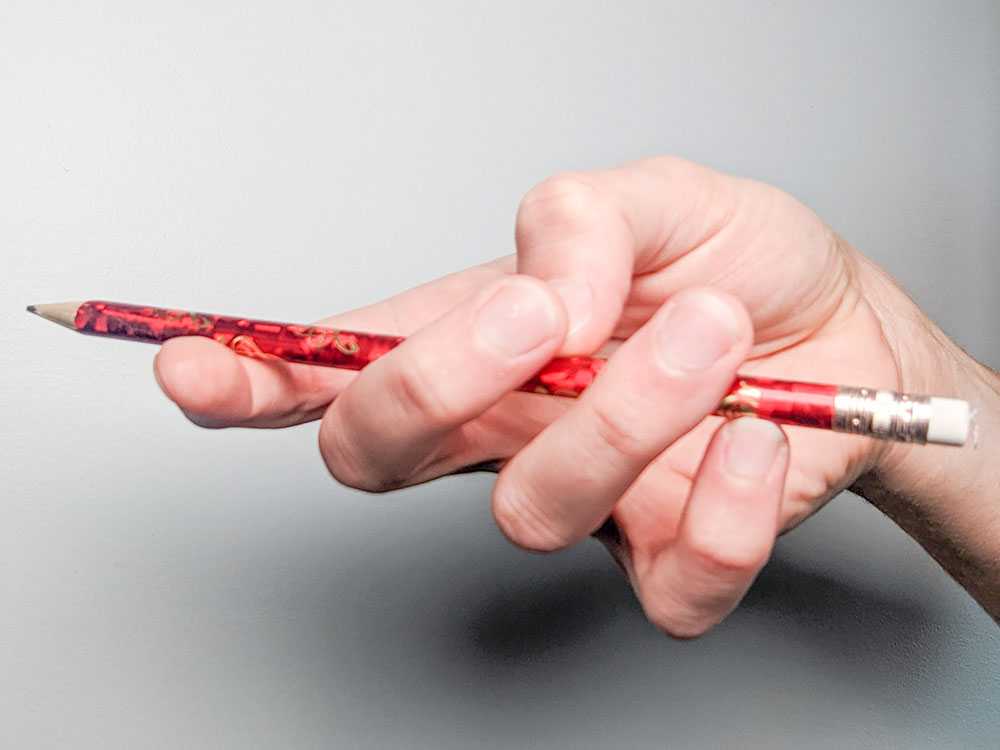
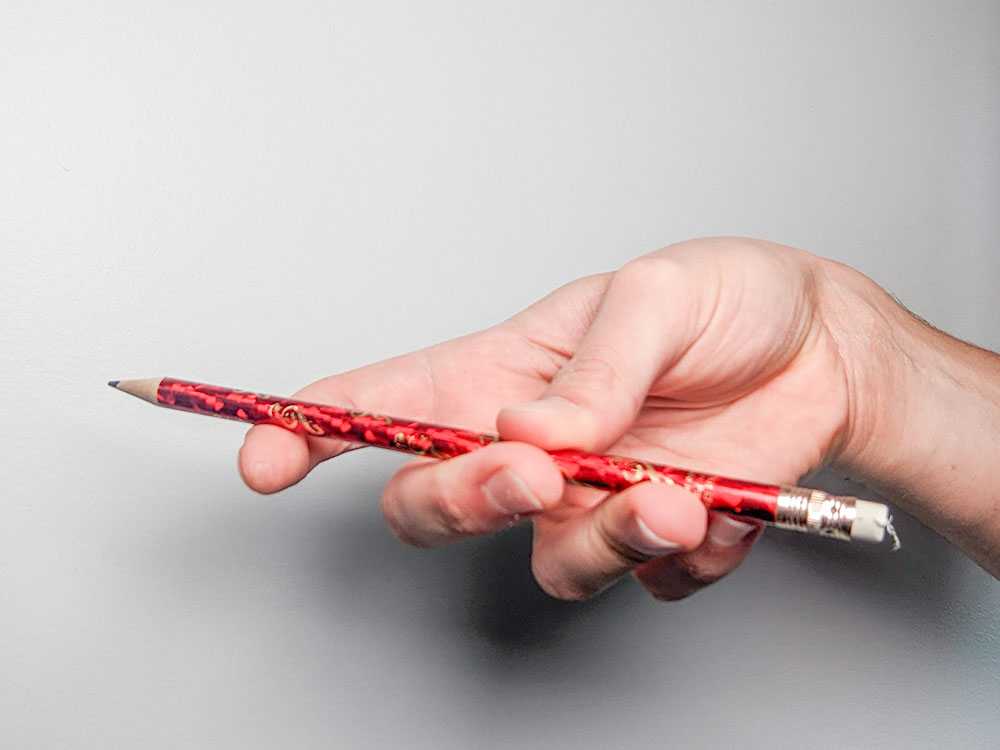
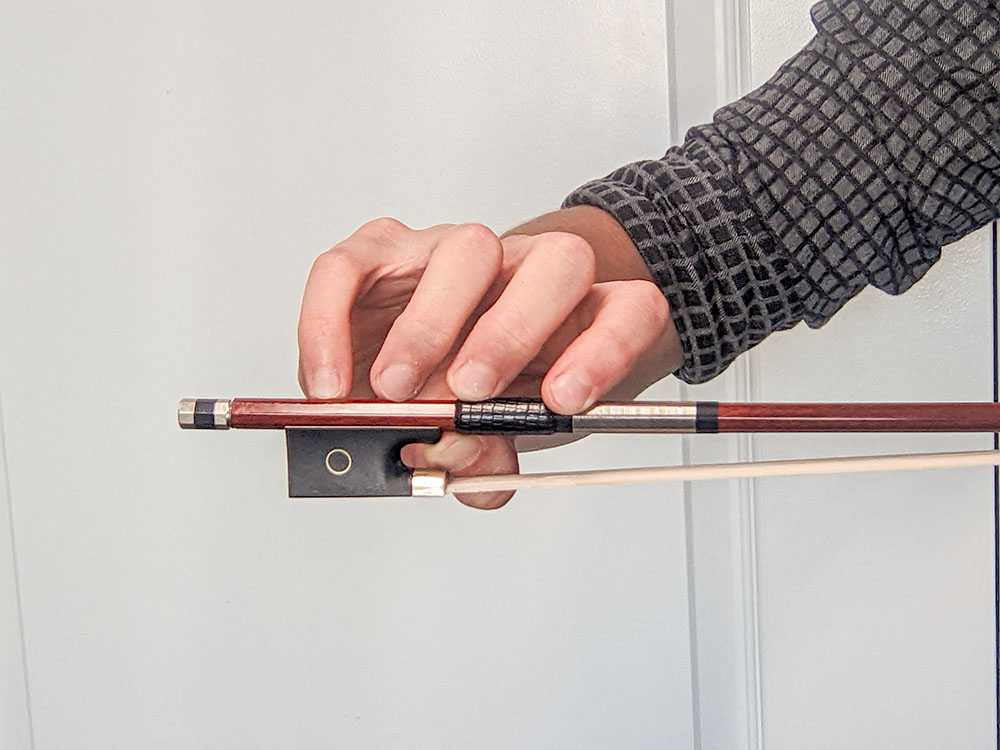
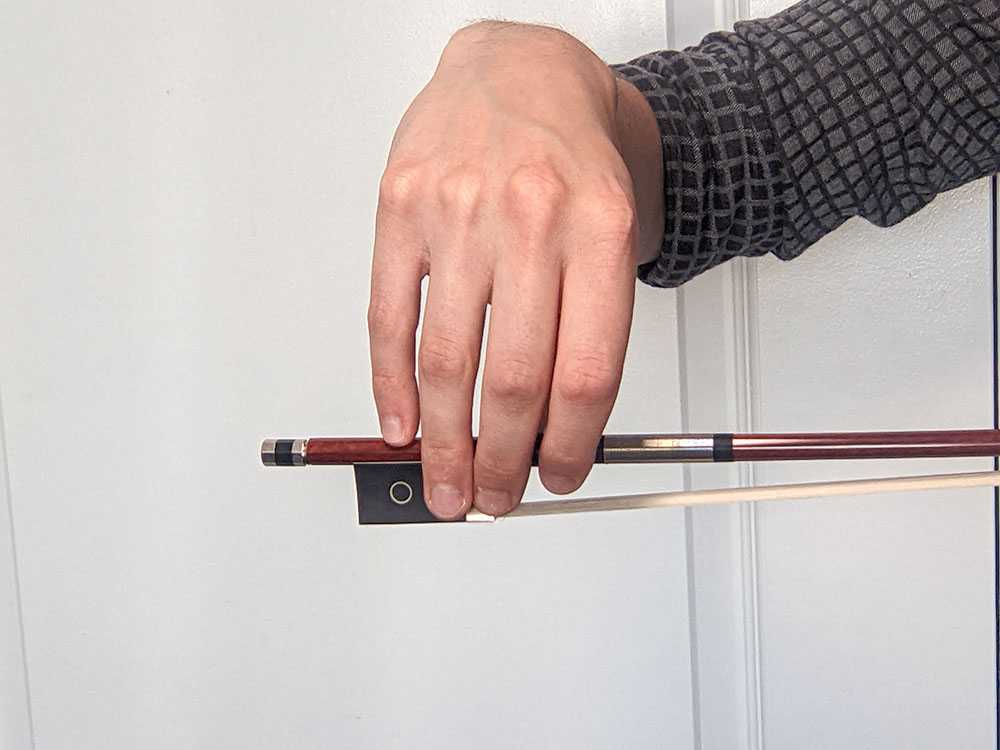
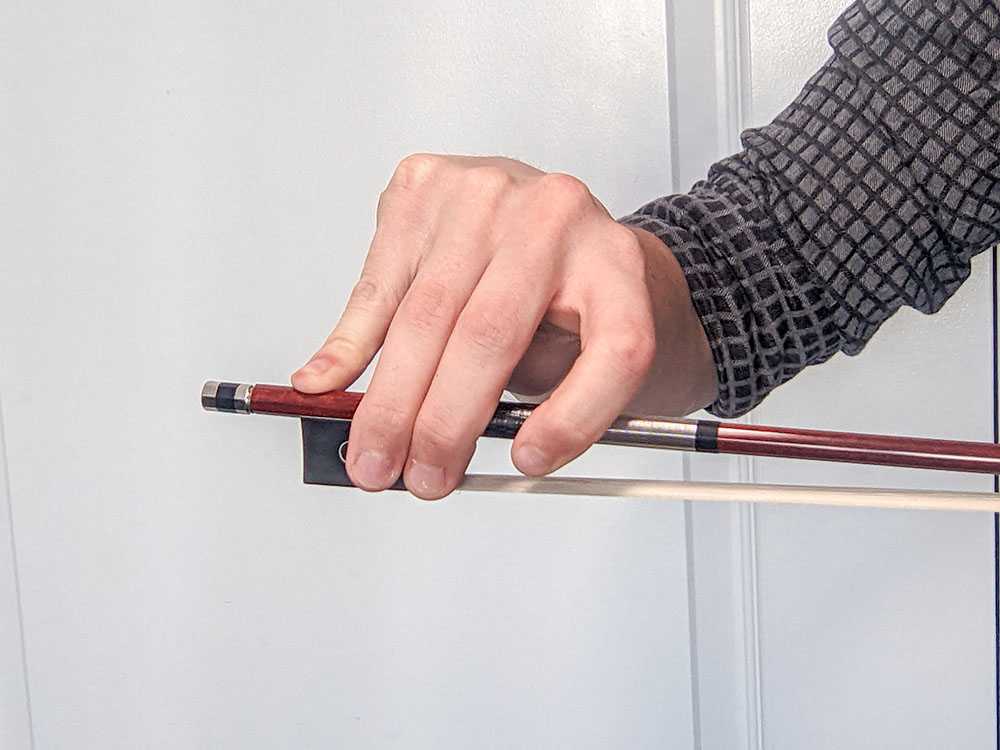
How do you hold a fiddle bow?
Great news, fiddle players! You can relax, because the bow hold for a violin and for a fiddle is exactly the same. Why? Because a fiddle and a violin are the same instrument! The only distinguishing feature is the style of music you are playing on the instrument.
Why do we hold the violin bow in this way?
As with many inventions, the violin bow underwent many changes that improved both the quality of the bow and its playability. In the Renaissance Period, violin bows were shaped like a “bow and arrow”, curved opposite the way modern bows are today. Bows also had a shorter life span, and would often be thrown out when they no longer worked as intended. Compare that to today, where a bow can be consistently rehaired to give it the same qualities it had when first bought or used.
With the massive changes to the bow over the past few centuries, how to hold the violin bow naturally changed too.
The violin’s predecessor, the viol, had no standard method to hold, and a lot of what we know today about bow holds prior to the late 1700s came from drawings or paintings of violin performers.
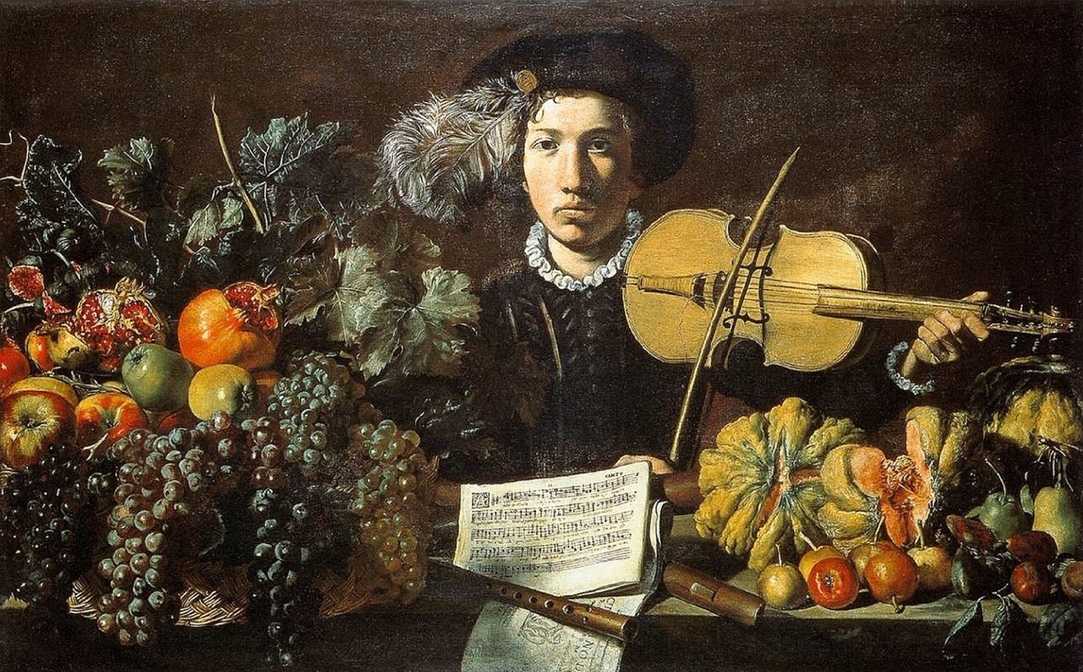
As society approached the 20th century, more and more violinists wrote literature about bowing and how to hold the bow.
A well-constructed bow hold will improve your tone quality, as well as reduce tension in the right hand. The thumb, middle finger, and ring finger (or “bunny bite”) establish the grip and core foundation of your bow hold.
As we saw with both the Russian and Franco-Belgian bow hold, the hand tilts towards the bow’s tip. The tilting of the hand in that direction is called pronation. This pronation distributes the weight of your arm into the index finger. More weight means a deeper, fuller sound, which became vital for performers as concert halls grew bigger and bigger. Pronation also allows for more stability and a consistent tone when bowing down, or from frog to tip.
The pinky finger works opposite the index finger. In the lower part of the bow, below the balance point, the pinky takes over and supports the weight of the bow to avoid too much weight on the string. Too much weight on the string equals a rough, scratchy tone, and we definitely don’t want that!
All 5 fingers are essential to a well-constructed bow hold . Think of your hand like a see-saw. When the index finger is weighed down, the pinky lifts. The pinky presses down as the index finger lifts. The bunny bite is the hinge of the see-saw, allowing the index and pinky finger to exchange the weight from one another.
But weight distribution can’t happen if there’s tension in the right hand. It feels counter-intuitive to be both structured and relaxed, but the balance between these two concepts promotes better sound and an exciting variety of bow strokes with top-notch articulation. Relaxed, flexible fingers also give you the “nearly” silent bow change.
Consider a paint brush, and the flexibility of each hair on the brush. When you drag the brush across a canvas, the bristles lag slightly behind the stick itself. When you change direction, there is a split second where the bristles move opposite the direction of your hand. Your fingers act as the bristle, with your arm being the stick itself.
Conclusion – You are now ready to hold the violin bow the right way.
In conclusion, a spectacular bow hold is essential to a spectacular sound and successful performance. The bunny bite establishes the foundation your violin bow hold.
The index finger drapes along the stick and the pinky finger placement on top of the stick allows for weight to distribute freely across the entire bow stroke.
It’s through pronation and supination of the bow hand that promotes a resonant and consistent tone.
The flexibility of the fingers allow for fluid bow strokes on the string, and exciting off-string strokes like spiccato and sautillé.
Holding the bow with structure and flexibility can feel quite tricky at first, so practice on a pencil first, then at the balance point to perfect the grip. With time, effort, and patience, you’ll be bowing like the pros.
Following this step by step guide to holding a violin bow correctly will definitely help, but having a Sage Music teacher examine your bow hold and check for inaccuracies will guarantee that you’re avoiding bad habits and learning in the most efficient way possible.
At Sage Music, we’ll show you what to do, like we’ve done in this article. But unlike other music schools, we’ll teach you how to learn it in the fastest and most effective way. That’s using our Arpeggio® lesson system, which is backed by learning science.
We offer award winning violin lessons in San Antonio, TX, New York City and online violin lessons for those who can’t make it into our locations or prefer to learn from home.
Your next step: Learn how to strengthen your violin bow hold.
Related



Jeremy
